 The Chemical Crystallography Laboratory is located in the white house with white shutters just by the junction
of Parks Road and South Parks Road. Here is a map to help locate us.
Click on the thumbnail for a full size picture.
Inside this attractive Georgian style listed building we have state of the art
crystallographic diffraction equipment (purchased Winter, 1995), laboratory space for
sample preparation, and adequate office space for computational work.
The laboratory contains two groups, run by
Prof. C. K. Prout and Dr. D. J. Watkin, and
Dr. A. M. Chippindale.
The Chemical Crystallography Laboratory is located in the white house with white shutters just by the junction
of Parks Road and South Parks Road. Here is a map to help locate us.
Click on the thumbnail for a full size picture.
Inside this attractive Georgian style listed building we have state of the art
crystallographic diffraction equipment (purchased Winter, 1995), laboratory space for
sample preparation, and adequate office space for computational work.
The laboratory contains two groups, run by
Prof. C. K. Prout and Dr. D. J. Watkin, and
Dr. A. M. Chippindale.
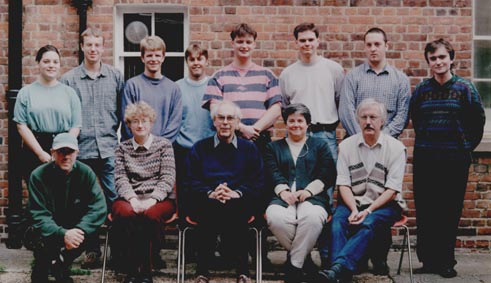
This is our group for 1997 - 1998.
The Prout/Watkin group currently consists of 3 D.Phils, 4 Part IIs, and 1 academic visitor. Members of other groups are encouraged to do their own structural analyses, and space and computers are available for them in the laboratory.
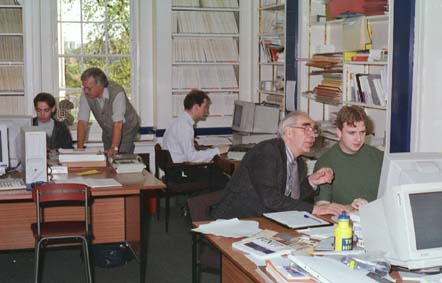
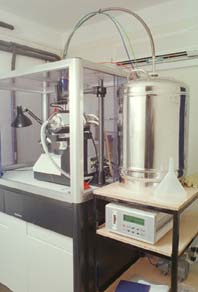 The diffraction equipment consists of:
The diffraction equipment consists of:
An Enraf-Nonius Mach3 serial diffractometer set up to run with copper
radiation. This is used for the examination of minute samples, for routine organic
structures, and for the determination of the absolute configuration of a wide range
of materials.
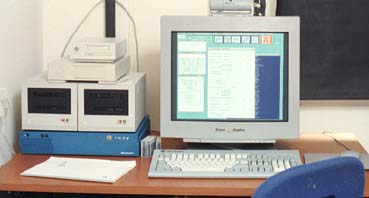 An Enraf-Nonius/Mac Science DIP2000 image plate diffractometer set up to run
with molybdenum radiation. This is used for most inorganic or organo-metallic
compounds, and materials with large unit cells.
An Enraf-Nonius/Mac Science DIP2000 image plate diffractometer set up to run
with molybdenum radiation. This is used for most inorganic or organo-metallic
compounds, and materials with large unit cells.
Both instruments are fitted with Oxford Cryosystems variable temperature
devices, capable of working at temperatures between -170C and +100C. This
enables studies to be carried out on sensitive and unstable materials, and permits
investigation of phase transformations and thermal anomalies in crystals.
A particular virtue of the Oxford environment is that students have hands-on access to all equipment. At the beginning of the year, Part II students are given a refresher course in X-ray crystallography, and then shown in detail how to use the equipment. Each student has their own Pentium PC for processing the diffraction data, accessing data bases, performing statistical tests and for developing crystallographic software.
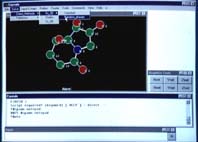 The Crystals software suite is available from our anonymous ftp server at
darkstar.xtl.ox.ac.uk.
The Crystals software suite is available from our anonymous ftp server at
darkstar.xtl.ox.ac.uk.